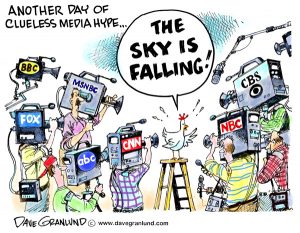Archive 5
Please write down the initials of 10 people you know fairly well. Then, beside each name, write down whether you think the person is happy (H) or unhappy (UH), and whether you would consider them selfish (S) or unselfish (US).
Person H or UH S or US
- BK UH US
- CW UH S
- KS H US
- AK H US
- NM H US
- JC UH S
- AM H US
- DC UH US
- NP UH S
- SM H US
Please code the number of people from above who fall into each of the four cells below. For example, if you have three unhappy/selfish people then put a “3” in the unhappy-selfish cell.
Happy Unhappy
| Selfish | 0 | 3 |
| Unselfish | 5 | 2 |
The pairing that had the highest frequency was happy, unselfish people. I believe that the reason happiness and selfishness rarely go together is because most people get satisfaction out of helping others and being unselfish. Also, if people are unhappy they tend to be more focused on their own woes and not aware of those around them who might also be suffering or need help. These people can be very negative also. I do know a couple of people who are unhappy and unselfish, but I believe that is because they can’t say no to people and give so much that they don’t take time to take care of themselves.
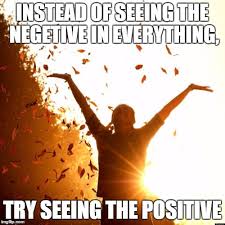
https://imgflip.com/memegenerator/34595162/Happiness
I chose this artifact because it made me think about the traits of happy, unhappy, selfish, and unselfish people and how they tend to interconnect. It also made me reflect on the people in my own life and myself who fulfill these qualities. My husband, for example, is unselfish, yet he is unhappy often. That is in large part due to the paperwork side of his job, which he hates. But he is very giving to his students and everyone else in his life. I think if he could have a different perspective he would be happier. Another person I know fulfills the happy unselfish traits and she is happy due to her giving nature. She genuinely gets pleasure out of helping others with the expectation of nothing in return.
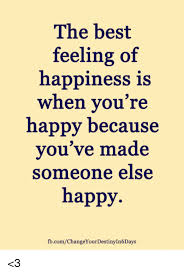
Archive 4
The Prisoner’s Dilemma
In order to facilitate a greater understanding of social dilemmas, play the prisoner’s dilemma game via the following website:
http://www.iterated-prisoners-dilemma.net/
I chose to play 10 rounds for each combination where Prisoner 1 changes how he plays and Prisoner 2 always stays silent.
Prisoner 1: Always confess Result: 0 Years Prisoner 2: Stay silent Result: 200 Years
Prisoner 1: Stay Silent Result: 0 Years Prisoner 2: Stay Silent Result: 0 Years
Prisoner 1: Tit for Tat Result :10 Years Prisoner 2: Stay Silent Result: 10 Years
Prisoner 1: Pavlovian Result: 9 Years Prisoner 2: Stay Silent Result: 29 Years
Prisoner 1: Grudge Holder Result: 10 Years Prisoner 2: Stay Silent Result: 10 Years
Prisoner 1: Optimistic Peacemaker Result: 10 Years Prisoner 2: Stay Silent Result: 10 Years
Prisoner 1: Pessimistic Peacemaker Result: 8 Years Prisoner 2: Stay Silent: Result: 48 Years
I didn’t screenshot the table because it stayed the same no matter how I changed things.
This artifact intrigued me more than I thought it would before I did the challenge. It is interesting to think about the fact that betraying someone else would actually have a benefit, at least in the context of this experiment. I think it ties back to my artifact 5 in that you can be selfish and happy at the same time. I tried putting myself in the prisoner’s shoes and how it would feel to make the decision to protect someone at the expense of my own freedom, or would I betray someone to gain my freedom. The other aspect of this is that it is assumed that the partner in crime is willing to save you because you would do the same for him. The truth is often the reverse.

Archive 3
For each ethnic and racial group, pick the two adjectives from the list below that best describe each group, regardless of whether you believe the stereotype to be true. Each adjective can be used to describe more than one group.
Adjective 1 Adjective 2
Americans __industrious _nationalistic
Chinese hostile industrious__
English _intelligent__ __tradition-loving
Germans __shrewd____ _nationalistic__
Irish _pleasure-loving superstitious_
Italians quick tempered __artistic____
Japanese scientific minded _tradition loving
Jews __religious__ _reserved____
Blacks _lazy__ ___musical__
List of adjectives:
| athletic
artistic cruel deceptive family-oriented hostile ignorant impulsive industrious intelligent lazy materialistic |
musical
nationalistic pleasure-loving selfish quick-tempered religious reserved scientifically-minded shrewd sly superstitious tradition-loving |
After you assign the adjectives to each group, compare you results with those found by Katz and Braly (1933) and Gilbert (1951); see below.
Results of Survey on Stereotypes
Group Katz & Braly (1933) Gilbert (1951) Your Class
Americans industrious/intelligent materialistic/intelligent
Chinese superstitious/sly family-oriented/
tradition-loving
English athletic/intelligent tradition-loving/reserved
Germans scientifically-minded/ scientifically-minded/
industrious industrious
Irish hostile/quick-tempered quick-tempered/religious
Italians artistic/impulsive religious/artistic
Japanese intelligent/industrious deceptive/sly
Jews shrewd/selfish shrewd/intelligent
Blacks superstitious/lazy superstitious/musical
I do believe many of these stereotypes have changed since Katz, Braley, and Gilbert assigned theirs. For example, I no longer think of the Chinese as family-oriented considering their one child per family rule, and their preference for boys. The Japanese are now considered one of the most scientific-minded cultures in the world and are no longer thought of as deceptive or sly. Things have changed since Gilbert attributed that stereotype to them right after WWII.
The black stereotype has changed even since I was a child. I’m not sure if that’s my adult perspective or a societal perspective. I was raised in a fairly racist home, so I heard all the negative stereotypes. I believe that the content of the stereotypes changing is largely due to our increased social awareness. With social media and television media, society sees a different side of various races or cultures, such as the black community. The textbook also talks about how people are afraid to be perceived as racist so what we tend to present to the world, and what we present to our closest friends and family might be different. This might also account for the change in stereotype, or at least what people state are their stereotypes.
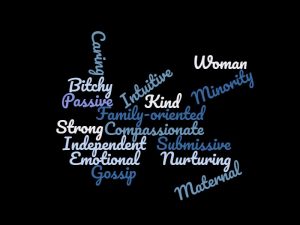
Source:
Anonymous. (1988). Stereotyping. In L.T. Benjamin, Jr. and K.D. Lowman (Eds.). Activities handbook for the teaching of psychology (Vol. 1). Washington, DC: American Psychological Association. Adapted by permission of the publisher.
I chose this artifact because it fit one of the goals I had for this class, which was to learn more about my own prejudices and inherent racism. The process of doing the word cloud was a challenge as I never really thought of what particular “group” I fit in. I chose woman for the word cloud because white was too difficult, honestly. I can easily think of traits of other cultures, but not of my own. This made me examine my viewpoints and how easy it is to stereotype others but not see the stereotype in ourselves.
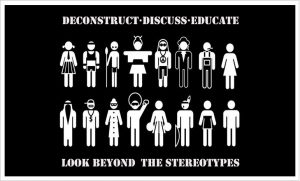
Archive 2
I chose to get in people’s personal space as my norm to violate. I have a huge personal space myself and there is one co-worker in particular who gets almost face to face with people when she talks to them and it makes me extremely uncomfortable. I decided to emulate her behavior and do that myself to others. Most people are aware of their own and others’ personal space and follow that societal norm. My thoughts while I was violating people’s space was that I hated every minute of it and I don’t understand how other people don’t realize when they are doing it. I definitely experienced cognitive dissonance in that my typical beliefs is to respect others’ space and I struggled with doing the opposite of that. Interestingly, some people didn’t seem to care that I was standing too close to them, while others tried sidling away. I was definitely more comfortable with my friends than my acquaintances. Men and women were equally as likely to try and put distance between us. My friends just looked at me like I was crazy until I explained what I was doing. I believe this demonstrates conformity to the societal norm of not standing too close to people when talking to them. Additionally, people feel threatened when someone is face to face with them. I know that’s how I feel. This experiment definitely made me realize that I will continue to conform to this norm and that there is a good reason for it.

My friend and I. It was very awkward even though we have known each other for years. We had a hard time keeping a straight face for this picture.
I chose this artifact because it made me step outside of my comfort zone which is something I don’t do very often. I tend to stay in my own little box. Doing this assignment was very challenging to me because I am very particular about my personal space and who is and isn’t allowed in it. To intentionally violate my own norm definitely made me experience some cognitive dissonance, while also allowing myself to see how other people feel. Some people are just fine with their personal space being invaded while it made others obviously uncomfortable. I realize I need to step out of my comfort zone more often, but probably not this particular one!

Archive 1

When I first opened this assignment the news report that immediately came to mind was the recent “stand-off” between the Native American man and the white private school student. I first saw the brief video on CNN, which definitely has a distinct media bias, like most mainstream media outlets. I then saw an article on Facebook which posted an alternative view giving a completely different perspective.
Representativeness heuristic in this instance would be how people view Native Americans, or perceived privileged white males. The fact that the student had on a Make America Great Again could lead people to think a certain way about that student. If one is a Trump supporter, then they would think the student was in the right and the news reports purporting the student was just surprised by the Native American man’s actions, hence the expression on his face, were true. If one believes that Trump is racist as are his supporters, then they would potentially side with the Native American man and believe the expression on the student’s face was one of defiance and superiority.
The availability heuristic would depend on one’s experience with crowds that are marching or demonstrating. Often the media portrays these events as violent, or on the verge of violence. These memories are likely the ones that are quickly retrieved. The mainstream media often seems to play up racial interactions. No matter what people’s own beliefs are there is the truth of events which is often not portrayed. Our own schemas, even reporters have them, get in the way of seeing the true nature of events in many cases. These kind of things always make me wonder, what is the real truth and would we as humans with so many different values and filters ever know what it is?
Watch Are We Scaring Ourselves to Death?

I chose to screenshot the teenagers. The reason I chose this picture is because the statistics in the video made me think of school shootings. I work at a high school and this is something that is prevalent in many educators minds. As a matter of fact, we had a lockdown drill today. When I was in high school the idea of a school shooting never crossed our minds. Now it’s the norm and it’s almost accepted as a probable event, even though the probability of a student being involved in a school shooting is low. The availability heuristic is where a memory of an event readily comes to our minds. School shootings are horrific and the media attention given to them is massive. Statistically the media likes to overinflate numbers and make it seem like school shootings are commonplace. The video focused on statistics in the first segment with crime rates. John Stossel made the point that crime rates aren’t going up, it is just how the media or other agencies present that information. One of the things I learned in my statistics class was how to properly interpret statistical graphs that are often shown on the news. Many times they only show a small segment of a larger graph making it appear as if the numbers are increasing more than in reality.
The video also talked about the perception of being a victim of crime. Elderly white people perceive to be at a higher risk of being a victim, but the statistic the video gave was that teenagers are in the higher risk group. With the media being accessible 24/7 it is easy to get images stuck in our heads of all the negative things happening in our society. This is how the media plays into the availability heuristic. I feel like we as a society should be aware of how we are being manipulated and take steps to do our research to prevent the spreading of misinformation.
References
Are We Scaring Ourselves to Death? (2013, November 20). Retrieved January 25, 2019, from https://www.youtube.com/watch?v=WmiFShBQDIs
Forrest, A. (2019, January 21). ‘Black Muslims’ to blame for high school students’ confrontation with Native American man, mother claims. Retrieved January 25, 2019, from https://www.independent.co.uk/news/world/americas/maga-hat-donald-trump-native-american-covington-catholic-nathan-phillips-black-muslims-a8737186.html
I chose this as my number one artifact because the news story really rattled me because I fell for the media report and instantly believed that this white teenager was being disrespectful to the Native American. It later came out that there was more to the story and we shouldn’t believe everything we see instantly without researching it. It also made me reevaluate my own heuristics and consider my own prejudices.
Following that was the video on scaring ourselves. What resonated with me was that the media tends to exaggerate sensational stories, such as mass shootings, specifically school shootings. While horrifying, they aren’t as prevalent as the media makes it out to be. Working in a high school makes me hyper-aware of the safety of my students. I remember after the Parkland shooting being nervous to go to work. The other side to this is that our children are becoming desensitized to the horror of these mass shootings and think nothing of it. A lockdown to kids these days is just another drill. There isn’t any thought given to the gravity of what we are drilling for. It makes me think of the A-Bomb scare of the 1950’s and 60’s and how the media hyped that Russians were on our doorstep.
